What’s bright, gives wonderful, round bokeh and is perfect for portraits, sports, street and product photography? Give up? It’s Sigma’s 85mm f/1.4 EX DG HSM lens. This beauty fits on both full frame and cropped sensor cameras.
The ideal portrait focal length is said to be twice to two and a half times the normal focal length. So before diving into the 85 let’s take a look at focal length and what it means in regards to sensor size. First, here’s a definition or two.
FOCAL LENGTH
Focal length is the distance in millimeters from the nodal point of the lens to the sensor with the focus set at infinity. Huh?
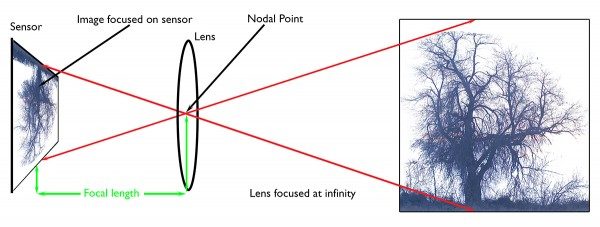
This diagram shows what the definition says. The nodal point is where the light rays cross and the image inverts from right side up to upside down. In most lenses including the 85, this is where the aperture blades are located. A subject that’s sharp with the lens focused at infinity is usually a long way away from the camera. At infinity the lens elements are the closest to the sensor as they can be and still project a sharp image. So with the lens focused on a distant subject, the number of millimeters between the sensor and where the light crosses in the lens is the Focal length.
Normal Focal Length
Normal means that the angle of view for a given format is about the same as we see with our eyes. The normal focal length is determined by the diagonal measurement of the sensor.
A full frame sensor is 36mm by 24 mm. Diagonally that measures 43.27mm. Typical cropped sensors are 22.7mm by 15.1mm with a diagonal of 27.3mm.
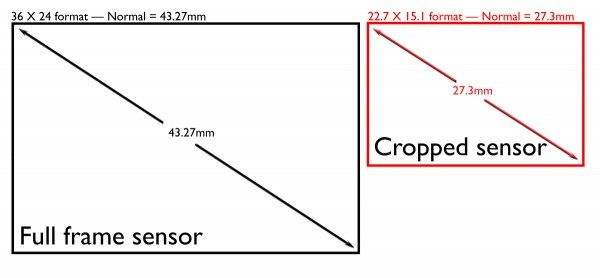
Full frame normal is 43mm usually rounded up to 50mm. Cropped sensor normal is 27mm rounded up to 28mm or 30mm.
Ideal Portrait Focal Length
The classic portrait lens is two times the camera’s normal focal length. The full frame DSLR has a normal focal length of 43mm. Twice that is 86mm. 85mm is as close to perfect for full frame cameras as a prime lens can be. For a cropped sensor format a 56mm lens would be great. The 85 on a cropped format falls in the longer portrait length category similar to the way a 135mm is for full frame.
So what does this all mean? Slightly longer than normal makes the 85mm a great everyday focal length! I love using it for candid portraits of friends in dark places who like dressing up and joining in with a spectacle at Medieval Times.
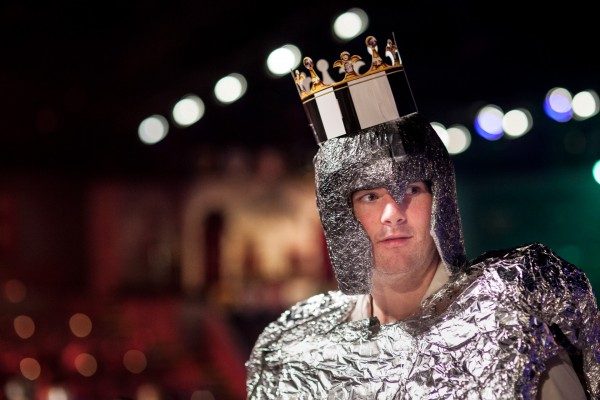
Bokeh
The round, out of focus highlights behind Sir Dan are great examples of bokeh-the Japanese word for blur. The aperture for this photo is f/2.0. It’s a misconception that a lens has to be used wide open to get beautiful bokeh. The number of blades that make up the aperture determines the roundness of the blur. The more blades the rounder the bokeh highlights will be. The Sigma 85mm f/1.4 features nine of them.
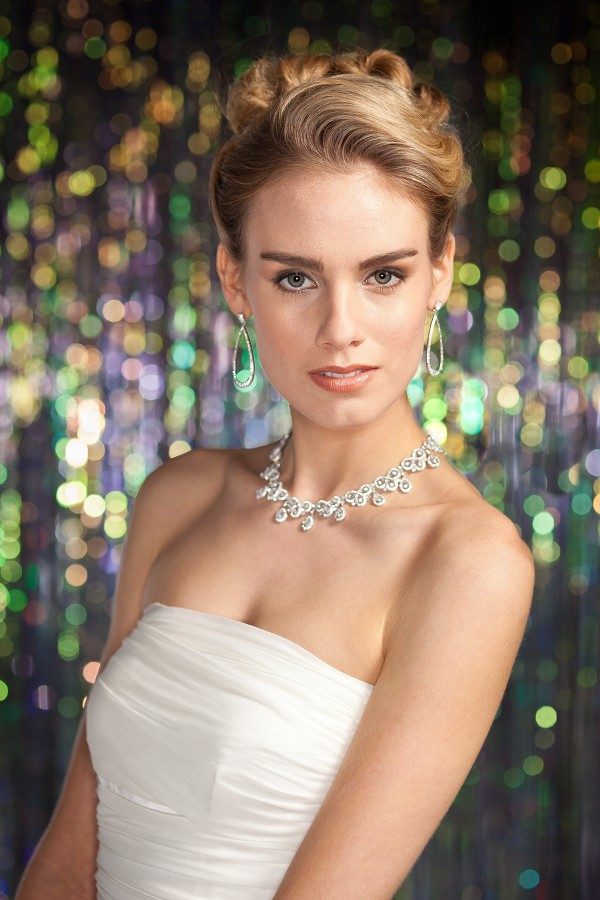
The sparkly background in the bridal portrait above is Rosco slit drape with a Dynalite location flash head aimed at it. It’s about ten feet behind her. The exposure was 1/125th at f/2.8. Again a wide open aperture is not necessary to create pleasing bokeh.
Shallow Focus
The wider the aperture the shallower the focus is. Another name for this effect is small depth of field. Depth of field is the areas of acceptable sharpness in front and behind the actual point of focus. This close up of Alexa shows her eyes, brows, and eyelashes are completely sharp.
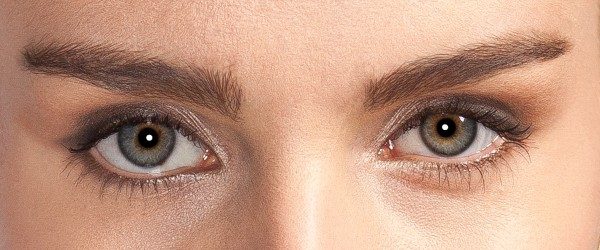
Consider this one where her head is turned slightly. It’s the same exposure as the previous photo. At f/2.8 that small position change demonstrates how shallow the depth of field can be with the 85.
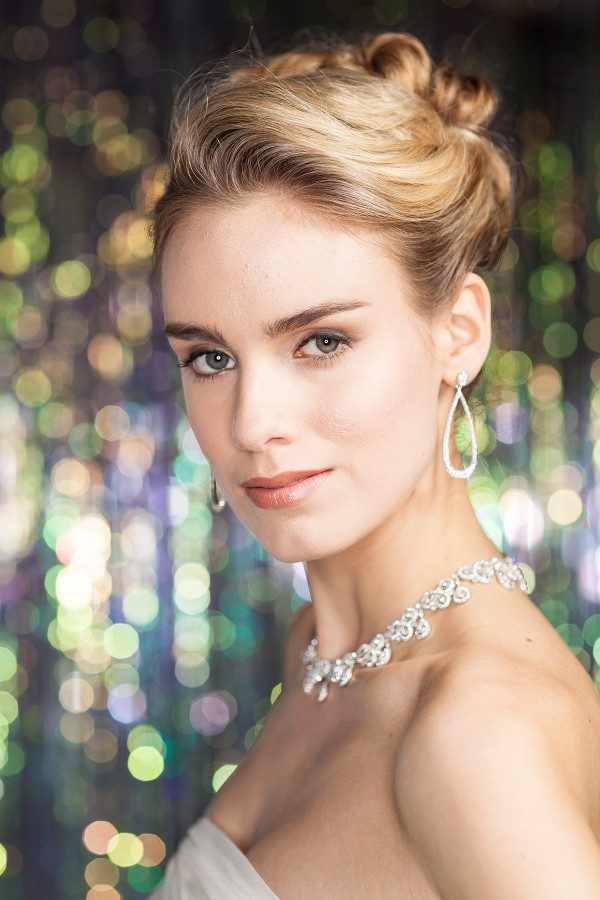
This close up cropped view from the previous photo tells the tale. Her left eye is in focus and tack sharp. The right eye is out of focus. The depth of field at f/2.8 is shallow indeed.
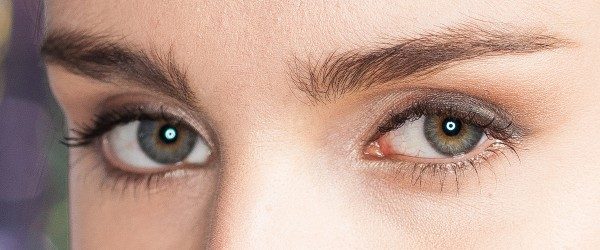
Shooting wide open is not necessary to get shallow focus. Experiment with apertures f/8 and below to see for yourself.
Move in close…
The closer you get to the subject the faster the area of sharpness falls off. The 85mm’s minimum focus is thirty-three and a half inches. With its magnification that’s really close!
Nine-day-old Christopher’s head and his father’s hands are in focus at f/9.0. His feet and hands are out of the field of sharpness. Nice!

Turn the lad sideways and at the same exposure and everything’s is sharp. By the way, a great way to photograph newborns is to drape the mom in black velvet. The baby is happy because he’s being held by mom and hears her heartbeat. The photographer is happy because the baby is happily cooperating.
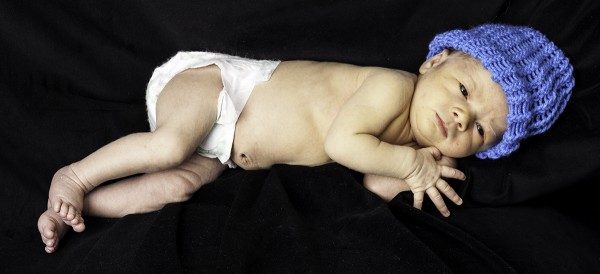
PORTRAITS
Family Portraits
The obvious use of the 85mm is for portraits. So here are a few that demonstrate its versatility. I was making family maternity portraits when Emily walked up to her mom. I used the 85 to record the intimacy of a her talking to her yet to be born sibling. The 85 let me frame the shot as a close up without being so close as to disturb the moment.

Light hearted photos like these two daughters kissing their father happen during family portrait sessions. With the 85 on my camera, I took a step closer, framed the shot then pressed the shutter. Priceless!
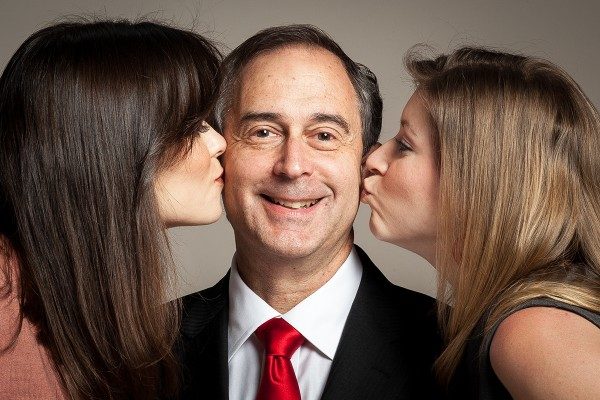
Whether recording a joyful time or one of saying good-bye, I count on the 85mm f/1.4.
Mark, a dear friend and long time client told me of his terminal cancer. I offered to make a portrait for his family. Instead, he asked me to document his passing. Over the next three months I made hundreds of photographs as friends and family came by to share stories and say “farewell.” The ultra fast 85mm let me shoot with the light in the room to make portraits like this one of him and his wife.
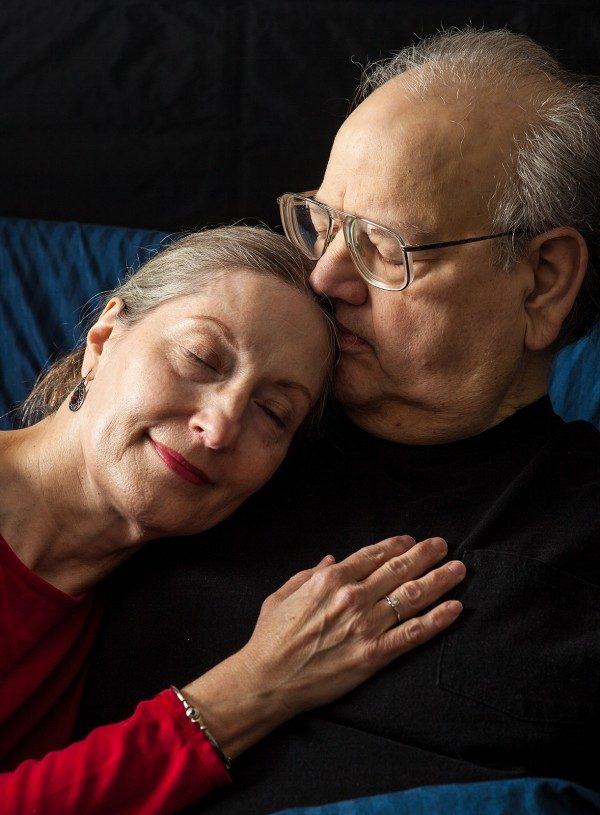
There were fun and joyful times too. This portrait of Mark with his sister’s family gathered around and on his hospital bed in his home. His three nieces shown here have all become MDs.
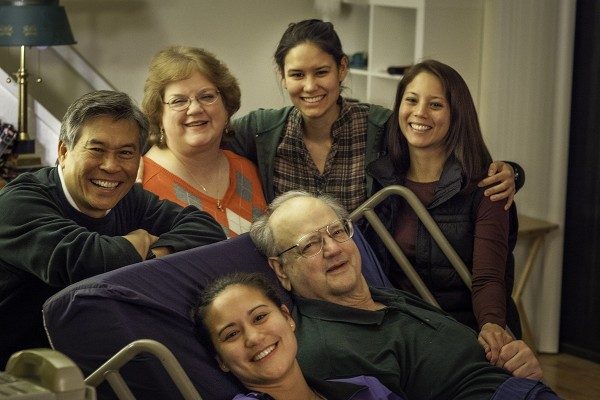
Executive & Corporate Portraits
Executive portraits are important business tools. Attached to an email, featured on a company website or in a blog as well as in social media sites, a great headshot says a lot about the businessperson. Often, these portraits are made in cramped conference rooms or common areas. The challenge of separating the subject from the background is nicely solved by using the 85mm f/1.4.

My 85mm does great work in medical practice portraiture too. I often make photographs of an office’s entire staff along with individual members. At f/11, the 85’s depth of field is wide enough to keep staggered poses like this one completely sharp.
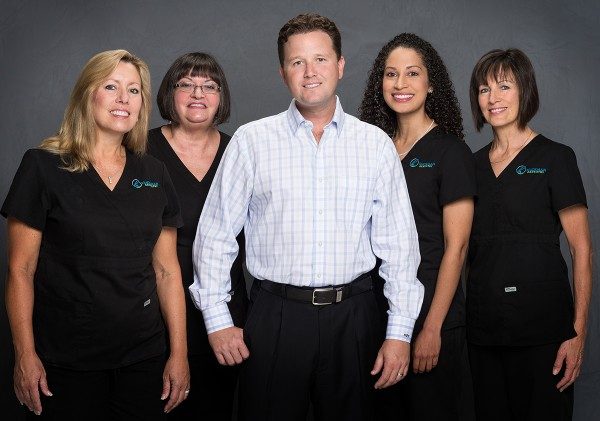
INDOOR SCHOOL SPORTS
Autofocus in Low Light
Photographing gymnastics or any school sport held inside or on a not-so-well lit field at night for that matter is a perfect subject for the 85mm f1.4. This lens is a full two f stops brighter than the popular f/2.8 zooms that most of us carry.
It’s bright f1.4 maximum aperture makes autofocus ultra fast even in low light action situations. The HSM (Hyper Sonic Motor) system that drives the focus is speedy, accurate and precise. It rarely has to search to lock in focus in dim circumstances. Shot wide open it delivers crisp detail as shown in this gymnast’s routine. 1/500th of a second, f/1.4, ISO: 640 Canon 70D.
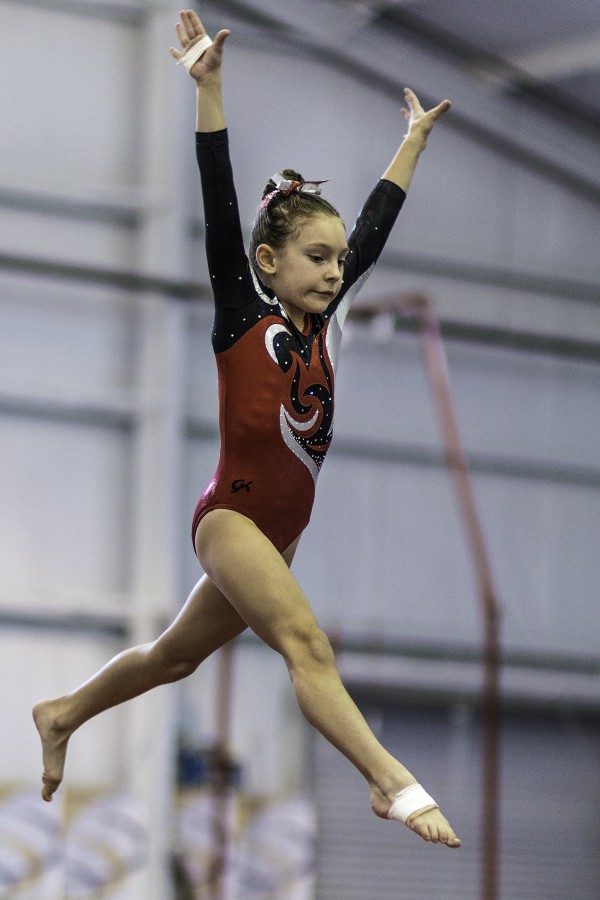
Cropped Format Bonus
The two photos below captured using the 85mm have the same magnification. The one on the left was made with a full frame camera. The right hand one was photographed with a cropped sensor camera. The cropped sensor camera seems to reach out farther than the full frame one. The difference is that the full frame shows more area around the subject. As an added bonus the depth of field is greater with a cropped short telephoto like the 85. A longer lens that would fill the full frame would also have shallower areas of acceptable sharpness in front and behind the focus point.
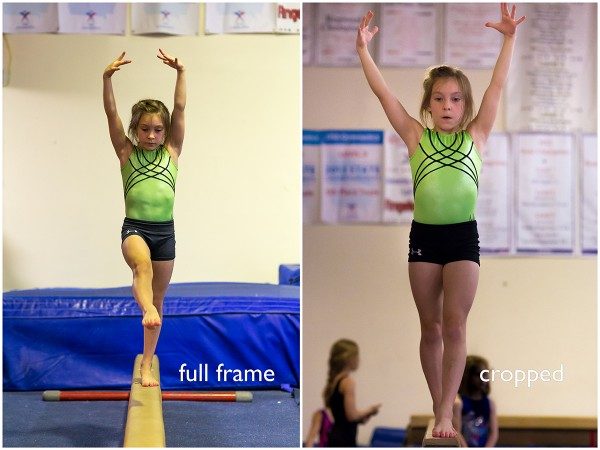
TRAVEL
Shooting travel with a short zoom lens on the camera is very tempting. I’ve used both Sigma’s 24-70mm f/2.8 IF EX DG HSM and their new 24-105mm f/4.0 DG OS Art series lens on trips. I keep going back to the 85mm. It’s such a great focal length that the results even from an the window seat on a plane are spectacular.

Constant Perspective
What I love is having a constant perspective when I’m shooting on the street. A wide-angle view pushes the background away from the subject while often distorting it. Too much telephoto blurs the background into unrecognizability. The 85 is not too long or too wide. It’s pretty much “just right.”

When the 24-105mm f/4.0 lens arrived it became my new “favorite” right up until I discovered that the almost always-used focal length I zoomed to was 85mm. I went back to “prime time” and the fixed 85mm f/1.4. What focal length do you zoom to most often?
Zoom By Walking Around
In situations where you would zoom in, walk closer to the subject. Need more in the frame? Walk backwards a bit. (Watch what’s behind you of course!) Want a different view? Walk a few blocks keeping the subject in sight as I’ve done here with the Space Needle during a recent trip to Seattle.
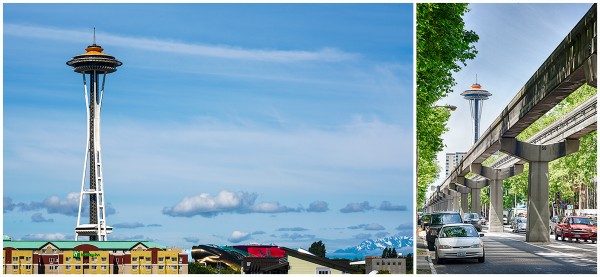
It’s great for making pictures indoors with available light. Chefs working behind swirling textured glass in a Las Vegas restaurant formed the backdrop for the place settings in the foreground. Crop them out and it becomes a complete abstracted view of reality.
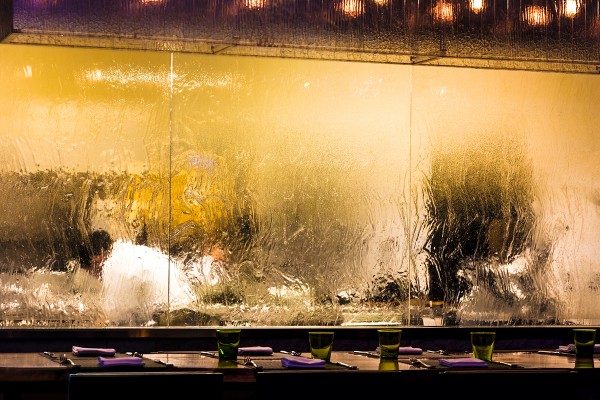
Sigma’s 85mm f/1.4 features special low dispersion (SLD) glass to minimize chromatic aberration. Its Super Multi-Coating reduces flare while eleven lens elements in eight groups deliver truly superior sharpness at all apertures. Take a close look at this sticker covered light pole. The enlargement of the barcode is tack sharp while the text tells us the item inventoried and who owns it.
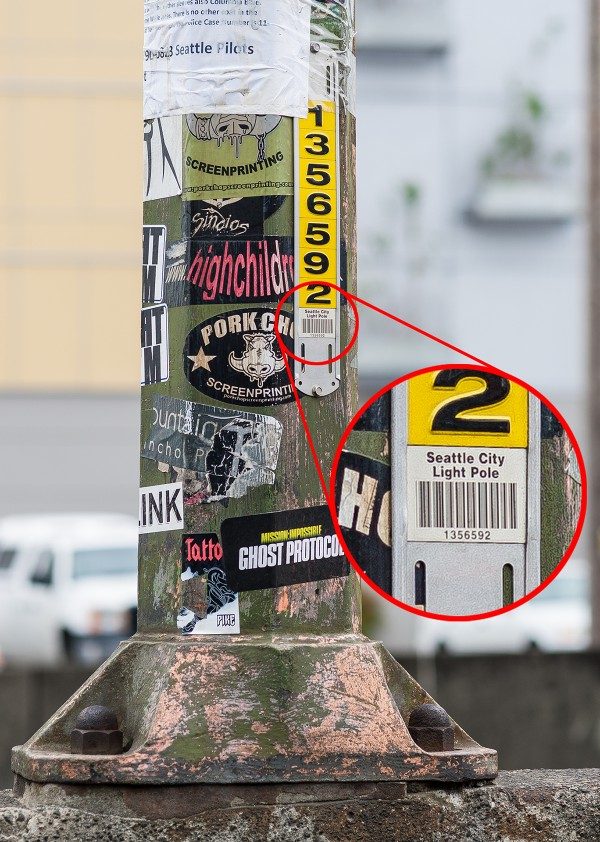
PRODUCT
It might surprise you that the 85mm is great for product photography. It works extremely well in situations where macro close up isn’t needed. The photograph below shows medical compression stockings for vein surgery patients to wear during recovery.
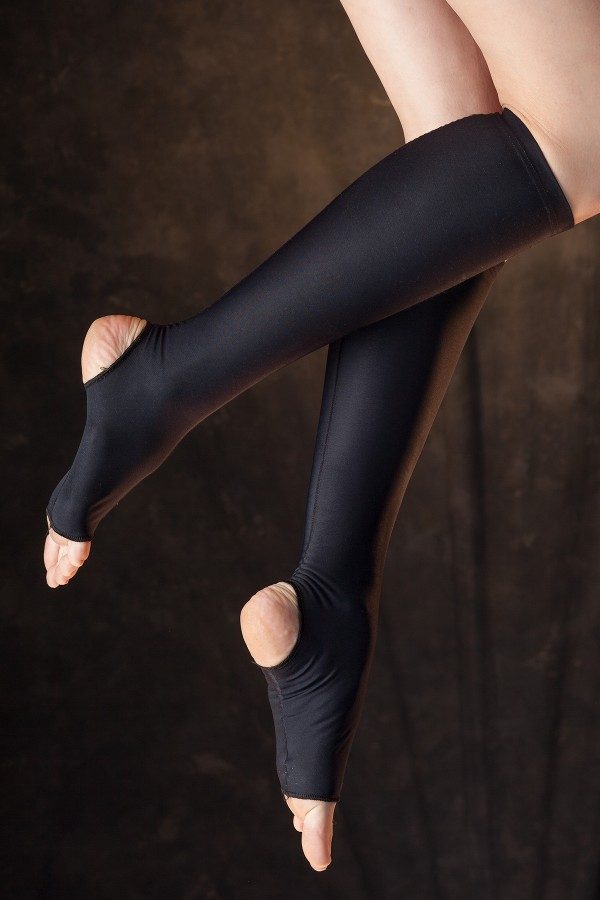
Here’s how the photograph was actually taken. My assistant Katie, is holding an X-Rite ColorChecker Passport that I use to accurately color balance the image in post. The model is lying on her back holding her legs in a bicycle like pose in the air. The previous photo was rotated in Photoshop to give the product a light-on-her-feet look. “Truth” in advertising!
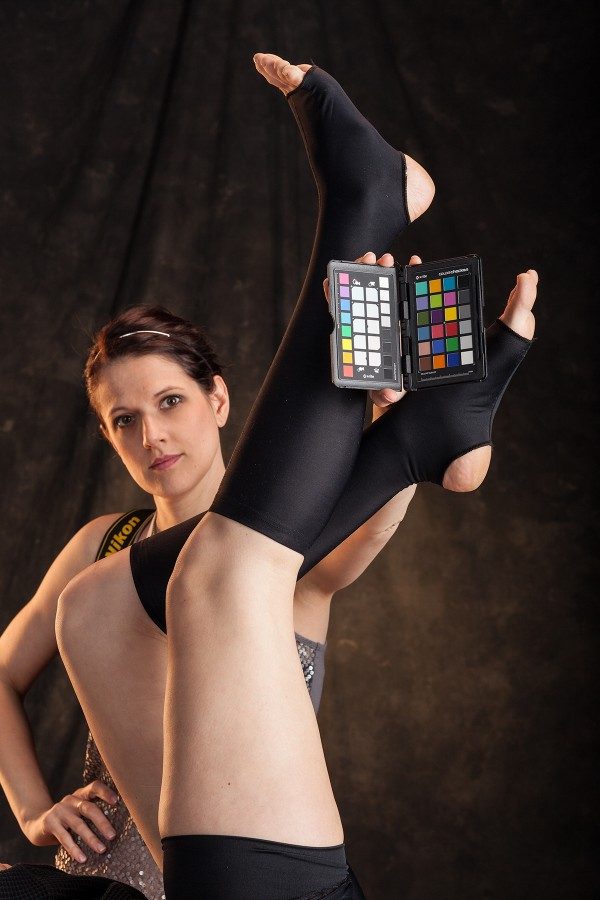
This lens also renders detail in both highlights and shadows. It’s shallow-ish depth of field helps separate the product from the background. This photo proves both statements. The barcode on the battery and the white type to its left are sharp and legible. The product is sharply defined from the softer, lighter toned background. The photo is for the instruction manual for the new Dynalite Baja B-4 battery powered mono-lights.
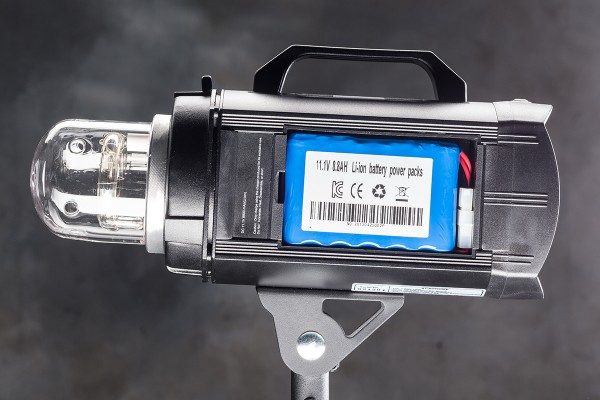
COMP CARDS
I photograph a lot of models for their comp cards. White backgrounds are popular. A piece of white Plexiglas over white background paper creates the reflection of the model’s boots. It also helps blend away the horizon line that appears where the paper under the Plexi she’s standing on isn’t getting all of the light that it does behind her. The 85, (at f/8.0 in this case) throws the horizon line behind her slightly out of focus. This combination of techniques keeps retouching to a minimum.
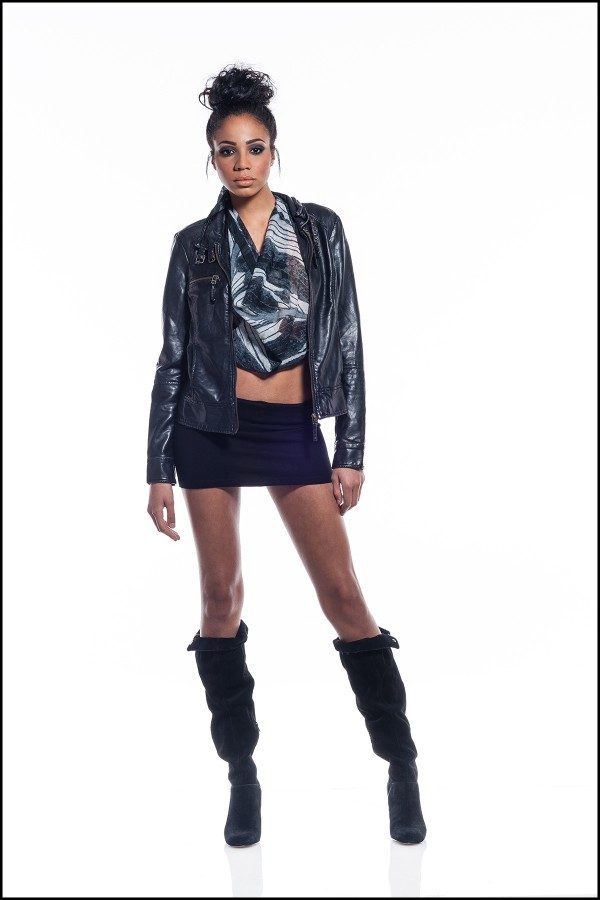
BEAUTY
Close ups of models is a sweet spot for the 85. They are also one of my favorite subjects to photograph with it. The detail this amazing lens from Sigma captures is… well, breathtaking. It’s easy to see individual strands of Courtney’s wonderfully curly hair. Her lashes are so distinct they can be counted.
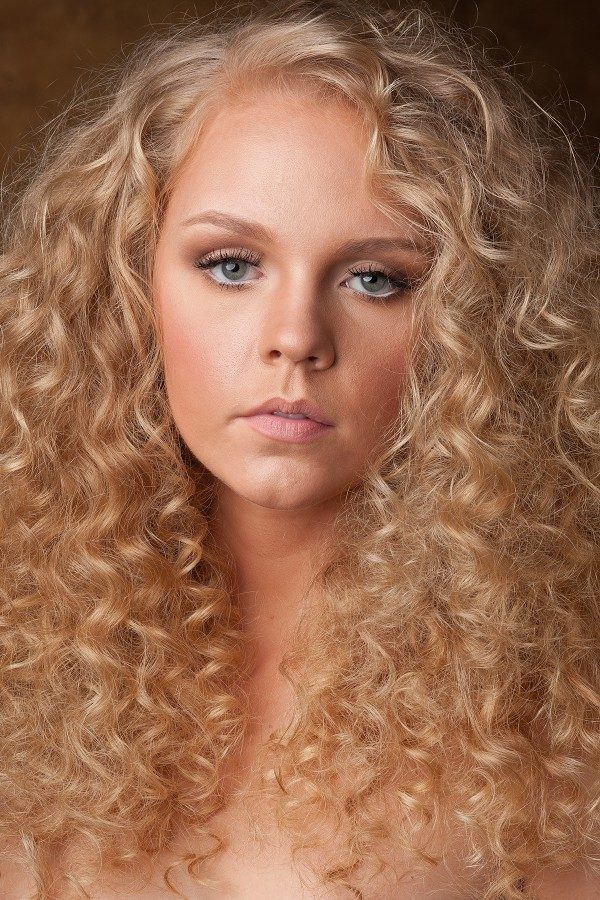
There’s more. This is a cropped version of the previous photograph. Look at her eyes. See the faint grayish ring just outside of both of her irises? Yep. She’s wearing contact lenses! Take a moment to really absorb the quality captured here.
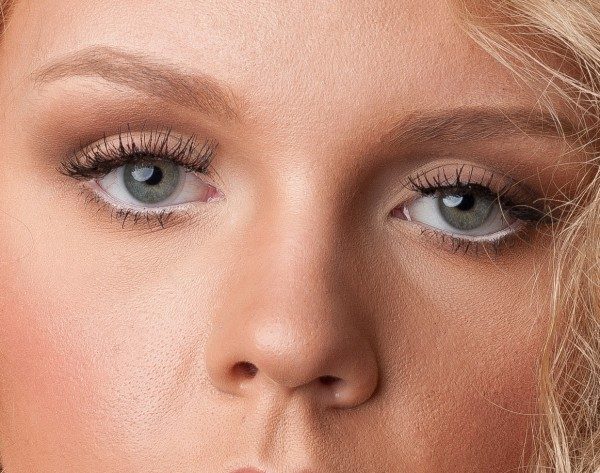
I couldn’t close this lens exploration without showing you the compression-stocking model’s face. This one was captured with the 85mm at 1/200th of a second, f/10, ISO: 100.
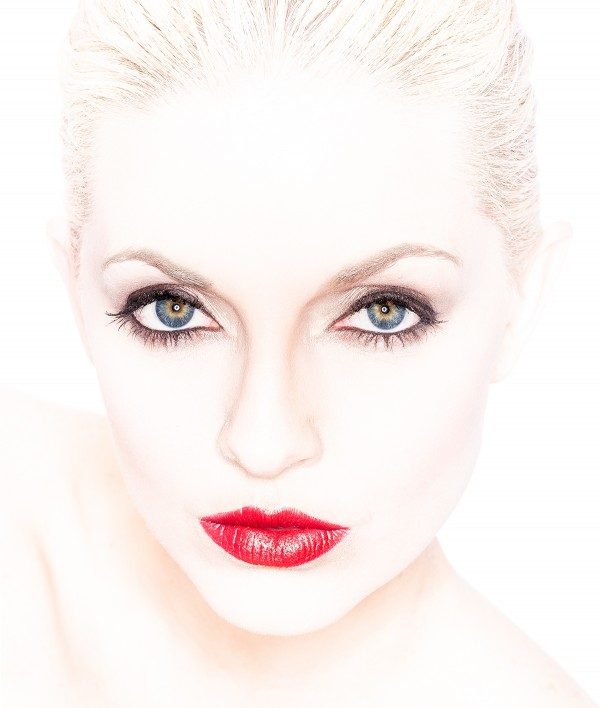
The 85mm f/1.4 lens from Sigma is a true thoroughbred workhorse of a lens. It’s light enough at just over a pound and a half to hand hold all day long if needs be. The autofocus is fast and supremely accurate. Should you prefer to manually focus the ring for that is wide and comfortable. It’s insanely sharp even wide open. It excels both in the studio and on location. There’s no doubt that this lens ROCKs practically any subject.

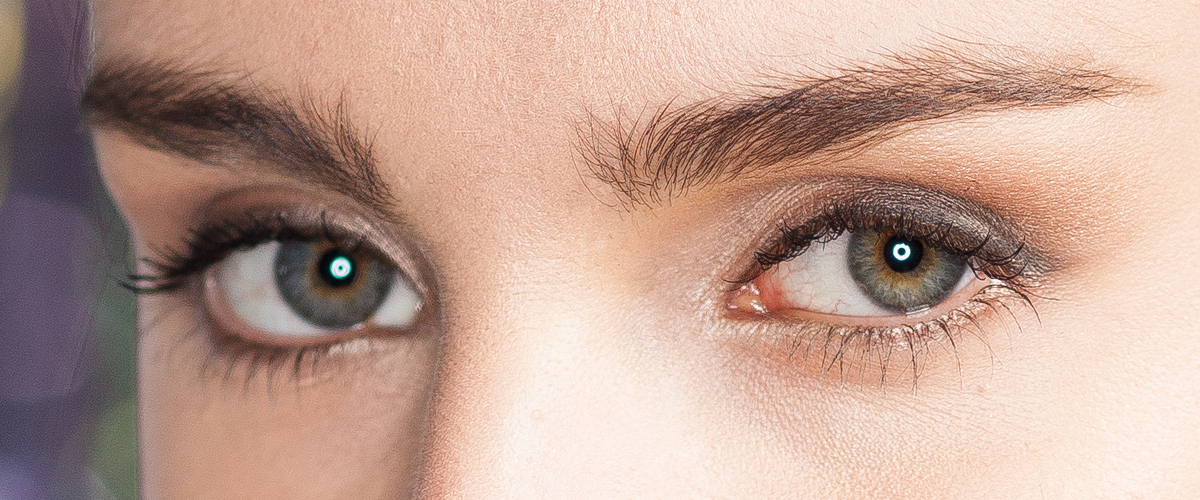
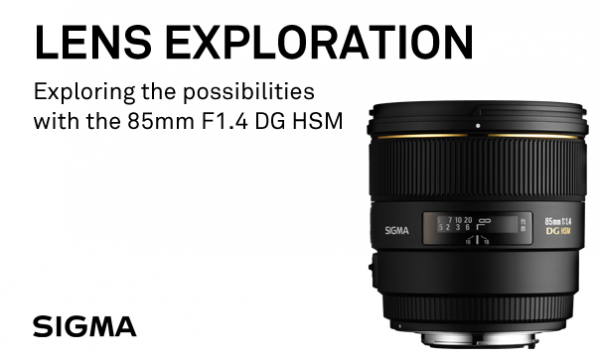
The sigma 85 has been one of my go to lenses for wedding photography, both with canon and nikon its been amazing!